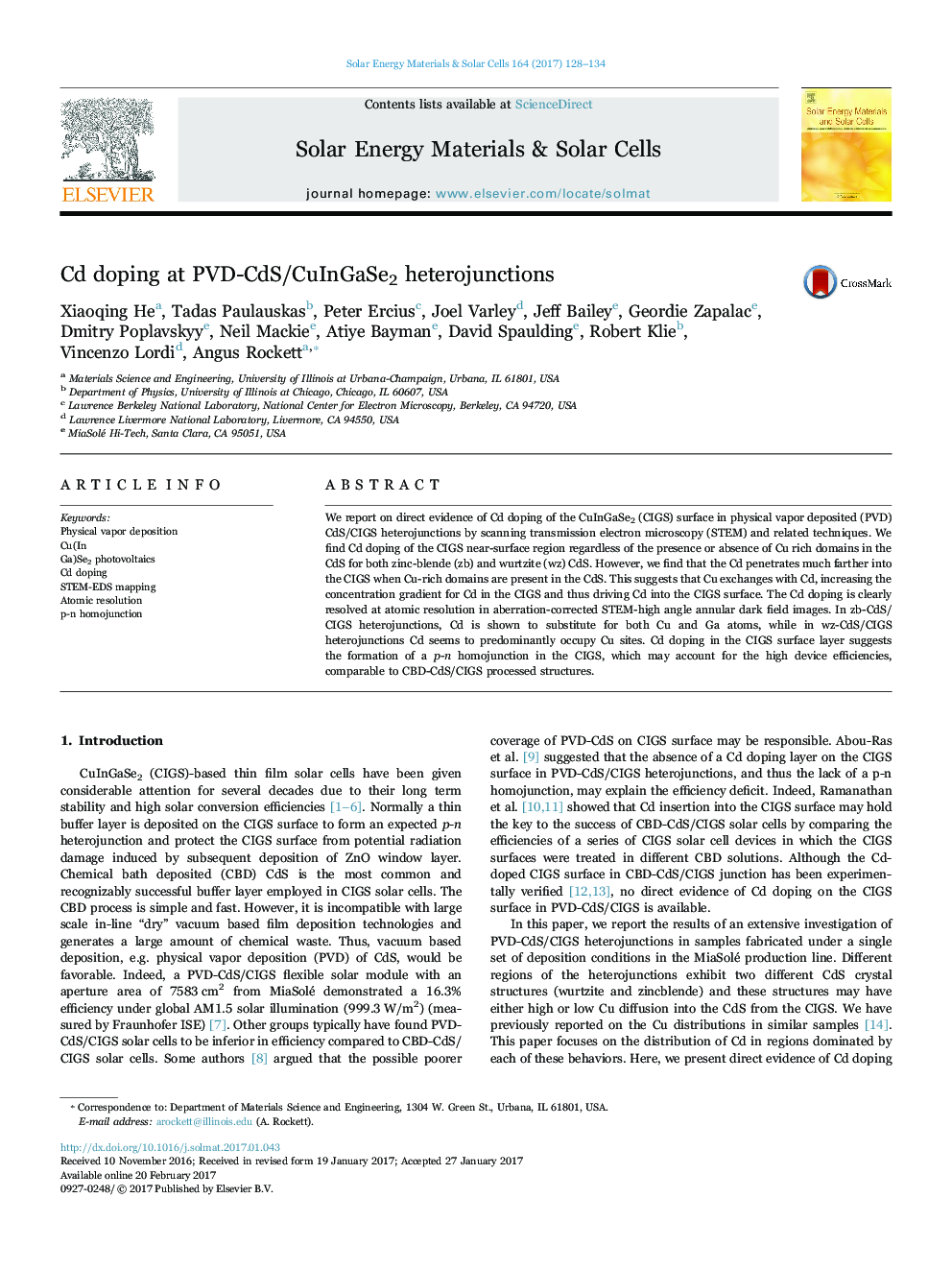| Article ID | Journal | Published Year | Pages | File Type |
|---|---|---|---|---|
| 6457114 | Solar Energy Materials and Solar Cells | 2017 | 7 Pages |
•Cd doping of CIGS surfaces is demonstrated in the physical vapor deposited CdS/CIGS heterojunctions.•Cd penetrates further into the CIGS surface when Cu domains are found in the CdS.•Cd doping of the CIGS near-surface region is concluded to lead to the formation of a p-n homojunction.•Cd doping behavior depends on crystal structure of the CdS.
We report on direct evidence of Cd doping of the CuInGaSe2 (CIGS) surface in physical vapor deposited (PVD) CdS/CIGS heterojunctions by scanning transmission electron microscopy (STEM) and related techniques. We find Cd doping of the CIGS near-surface region regardless of the presence or absence of Cu rich domains in the CdS for both zinc-blende (zb) and wurtzite (wz) CdS. However, we find that the Cd penetrates much farther into the CIGS when Cu-rich domains are present in the CdS. This suggests that Cu exchanges with Cd, increasing the concentration gradient for Cd in the CIGS and thus driving Cd into the CIGS surface. The Cd doping is clearly resolved at atomic resolution in aberration-corrected STEM-high angle annular dark field images. In zb-CdS/CIGS heterojunctions, Cd is shown to substitute for both Cu and Ga atoms, while in wz-CdS/CIGS heterojunctions Cd seems to predominantly occupy Cu sites. Cd doping in the CIGS surface layer suggests the formation of a p-n homojunction in the CIGS, which may account for the high device efficiencies, comparable to CBD-CdS/CIGS processed structures.
